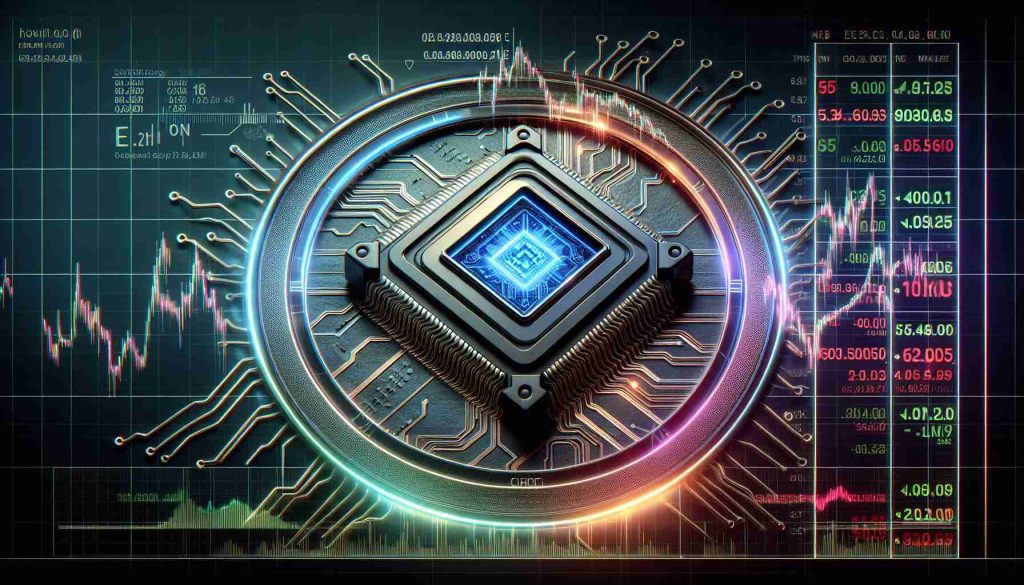Nvidia, the tech giant renowned for its AI prowess, has had a meteoric rise, capturing investor attention worldwide. With its market cap soaring to $3.5 trillion following a 195% increase in share price this year, Nvidia’s growth trajectory continues to intrigue investors. Yet, the future may hold both promising opportunities and formidable risks.
Potential Risks for Nvidia
Despite a remarkable 94% revenue growth in Q3, Nvidia is witnessing a slowdown compared to its previous quarters. The anticipated 70% revenue growth in Q4 marks a continuation of this deceleration, which could cause concern among shareholders. Beyond revenue growth trends, Nvidia’s reliance on a handful of major clients poses a significant vulnerability. Reports suggest that major players like Microsoft, Meta Platforms, and SuperMicro contribute vastly to Nvidia’s revenue. Any disruption in these relationships could negatively impact the company.
The ongoing demand for substantial investment in generative AI represents another hurdle. Building these advanced AI systems requires resources like data centers, chips, and vast amounts of electricity and water. If these investments do not result in significant revenue improvements or cost reductions, Nvidia’s profitability may suffer. Adding to the complexity, a defining application for generative AI that delivers high ROI remains scarce, putting Nvidia at risk if the AI momentum slows.
Opportunities for Continued Growth
Still, Nvidia’s advancements, particularly with the Blackwell chips, offer hope. Expected to generate $13 billion in Q4 2024, these faster and more energy-efficient chips could bolster the company’s standing. Moreover, the expansion of super clusters that feature Nvidia’s advanced technology may drive unexpected growth.
Nvidia stands at a crossroads; whether it capitalizes on opportunities or succumbs to its challenges, only time will tell. Investors are watching closely.
Nvidia’s Uncharted Territory: Beyond AI and Towards New Horizons
Nvidia’s exponential growth has made it a household name and an alluring case study within the tech industry. While the media often focuses on its AI innovations and stock market prowess, there are untapped areas of interest regarding its global impact, community influence, and the potential for various societal shifts that are worth exploring.
The Societal Impacts of Nvidia’s Technological Revolution
Nvidia’s influence extends beyond financial markets and tech circles, increasingly affecting how people live and interact worldwide. Its technological advancements are reshaping industries through improved automation and sophisticated data analysis. But how does this touch the everyday lives of ordinary people?
One compelling area Nvidia is influencing is healthcare. AI-driven diagnostics and patient monitoring systems introduced by Nvidia’s technology could revolutionize how diseases are detected and treated, potentially saving millions of lives. Similarly, the automotive industry is racing towards fully autonomous vehicles, with Nvidia’s AI at the steering wheel.
Advantages and Controversies Surrounding Nvidia’s Expansion
The benefits Nvidia’s technology brings are significant. For instance, improving efficiency across sectors could lead to economic growth and job creation. In healthcare, faster and more accurate diagnostics can enhance patient outcomes. However, these developments do not come without contention.
One controversy revolves around data privacy. As Nvidia powers more data-rich applications, concerns about how this data is used and secured continue to escalate. Are existing frameworks sufficient to protect individuals’ privacy, and what new regulations might be necessary?
Another issue is the environmental cost. The energy consumption of powering advanced AI applications raises sustainability concerns. Critics argue about the tech giant’s carbon footprint and stress the need for environmentally friendly practices.
Nvidia and Global Power Dynamics: A Two-Edged Sword
Nvidia’s growing influence also holds geopolitical implications. With a significant share of AI technology dependent on its hardware, Nvidia wields considerable power globally. This can be problematic – how will smaller nations compete in tech innovation when a select few companies hold such sway?
On the upside, Nvidia has the potential to forge international collaborations, fostering technology sharing and innovation that surpasses borders. Yet, critics caution against potential over-reliance on Western tech giants and stress the need for balanced global digital progress.
Exploring Key Questions
As Nvidia continues to grow, several pertinent questions arise:
– Will there be a significant shift in the global workforce due to AI-driven automation, and how should communities prepare for it?
– How can Nvidia balance its rapid expansion with the need for stringent ethical guidelines and sustainable practices?
Related Links
For further reading, consider exploring insights from Nvidia on Forbes and TechCrunch’s take on emerging AI technologies.
In summary, Nvidia’s trajectory is not just a story of tech brilliance and financial triumph; it poses critical questions about societal evolutions, ethical considerations, and global power structures in the coming AI-driven era. As these threads unfold, stakeholders—ranging from investors to policymakers and everyday citizens—must navigate the intricacies of this transformative age.




















